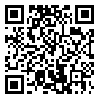BibTeX | RIS | EndNote | Medlars | ProCite | Reference Manager | RefWorks
Send citation to:
URL: http://journal.rums.ac.ir/article-1-7547-en.html
Background and Objectives: Information related to the spread of disease and spatial risk factors can assist policymakers and managers in disease control. This study aimed to analyze the spatial-temporal clustering of COVID-19 mortality in Hamadan Province.
Materials and Methods: The present study is an ecological research. All patients with a definitive diagnosis of COVID-19 and death due to COVID in Hamadan Province from the beginning of 2020 to the end of 2022 were included in the study. Zoning maps were used to display the distribution of death cases.The Getis-Ord G statistic was utilized for hot spot analysis. To examine the trend of COVID-19 mortality over the course of the epidemic, a Poisson model was employed.
Results: In total, 7265 COVID-19 patients who died during the study period were included. In November 2020, and May and September 2021, the highest cases of COVID-19 related deaths occurred, coinciding with the peaks of the third, fourth, and fifth waves of the epidemic. In each of the studied periods, COVID-19 mortality significantly changed compared to the baseline period (from March to September 2020). The relative risk of death due to COVID-19 in the province increased from October to February 2020 and March to September 2021 compared to the baseline period and decreased in subsequent periods. High-risk points in Hamadan Province regarding the incidence of deaths caused by COVID-19 from March 2020 to February 2022 were located in several northern and central counties of the province.
Conclusion: At the beginning of the epidemic, high-risk areas with high incidence rates were located in the northern counties of the province. In later stages, during the middle of the epidemic, the range of high-risk areas expanded to the central-southern and then southern counties of the province.
Keywords: COVID-19, Geographic information system, Spatial-temporal clustering analysis, Hamadan
Funding: This study did not have any funds.
Conflict of interest: None declared.
Ethical considerations: The Ethics Committee of Hamadan University approved the study (IR.UMSHA.REC.1401.393).
Authors’ contributions:
- Conceptualization: Ali Moradi
- Methodology: Nastaran Moradi
- Data collection: Mohammad Mirzaei
- Formal analysis: Ali Moradi, Nastaran Moradi
- Supervision: Ali Moradi, Nastaran Moradi, Mohammad Mirzaei
- Project administration: Nastaran Moradi
- Writing – original draft: Fatemeh Darabi, Ali Moradi, Nastaran Moradi
Writing – review & editing: Fatemeh Darabi, Ali Moradi, Nastaran Moradi
Received: 2024/10/29 | Accepted: 2025/04/20 | Published: 2025/05/20
| Rights and permissions | |
 |
This work is licensed under a Creative Commons Attribution-NonCommercial 4.0 International License. |







